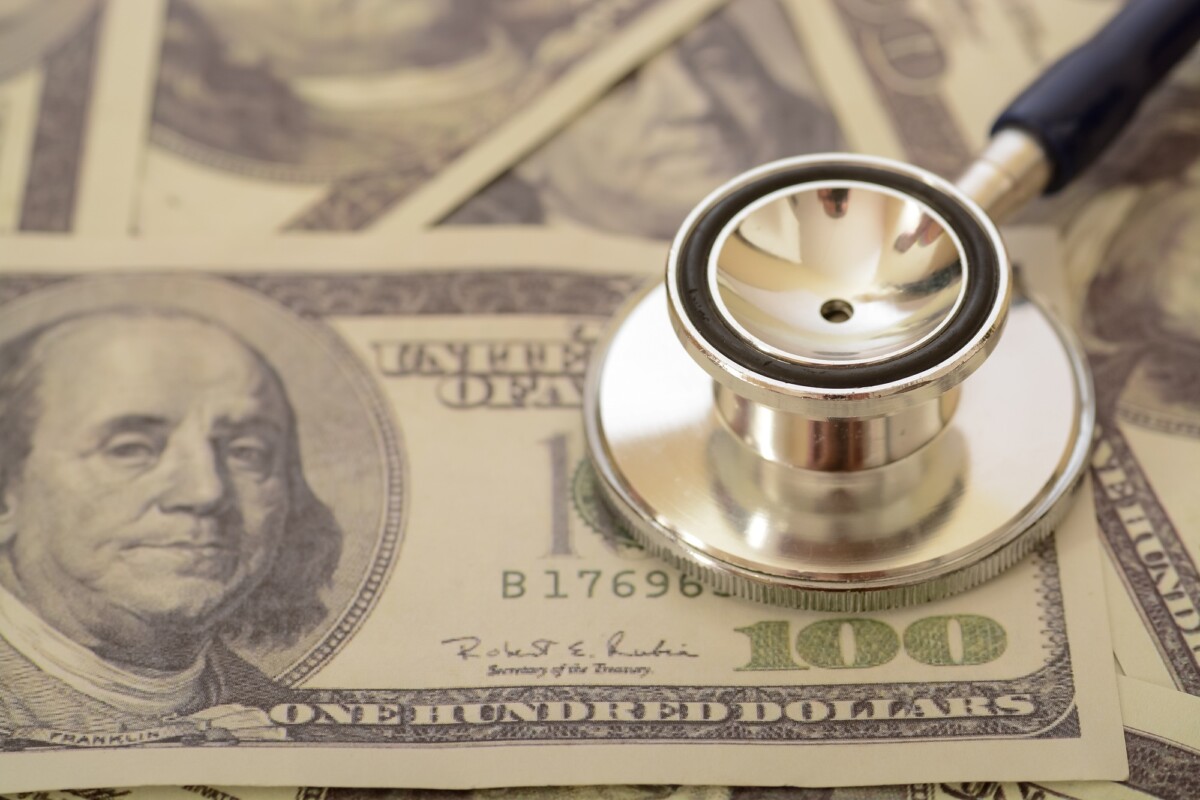What Is the Donut Hole? A Comprehensive Guide to Medicare’s Coverage Gap
The donut hole, officially known as the coverage gap, is a term that many Medicare beneficiaries encounter when discussing their prescription drug coverage. This gap occurs in Medicare Part D, which helps cover the cost of medications. Essentially, once you and your drug plan have spent a certain amount on covered drugs, you enter this phase where you may have to pay a higher percentage of your medication costs out of pocket. Understanding this concept is crucial for anyone relying on Medicare for their healthcare needs, as it can significantly impact your budget and access to necessary medications. During the donut hole phase, beneficiaries are responsible for a larger share of their prescription drug costs.
For example, in 2023, once your total drug costs reach a specific threshold, you will find yourself in this coverage gap. While you are in the donut hole, you may pay 25% of the cost for brand-name drugs and 25% for generic drugs. This can be a shock for many, especially if they are used to lower copays during the initial coverage period. It’s important to keep track of your spending to avoid unexpected expenses during this time. Fortunately, the donut hole is gradually closing due to provisions in the Affordable Care Act.
By 2025, beneficiaries will pay no more than 25% of their drug costs in the coverage gap, which is a significant improvement. However, it’s still essential to plan ahead and understand how the donut hole works, as it can affect your overall healthcare strategy. If you anticipate needing a lot of medications, consider discussing your options with a Medicare advisor to find the best plan that minimizes your costs throughout the year, including during the donut hole phase.
How the Donut Hole Affects Prescription Drug Costs
The donut hole, officially known as the coverage gap, is a term that many Medicare beneficiaries encounter when it comes to their prescription drug costs. This gap occurs after you and your drug plan have spent a certain amount on covered medications. Once you hit this threshold, you enter the donut hole, where you may have to pay a larger share of your prescription costs until you reach the next spending limit. Understanding how this gap works is crucial for managing your healthcare expenses effectively.
During the donut hole phase, beneficiaries often face significantly higher out-of-pocket costs for their medications. While the Affordable Care Act has made strides to close this gap over the years, many people still find themselves struggling with the financial burden. For instance, in 2023, beneficiaries are responsible for 25% of the cost of brand-name drugs and 25% for generics while in the donut hole. This can lead to tough choices about which medications to prioritize, especially for those with chronic conditions requiring multiple prescriptions.
It’s important to note that once you reach the out-of-pocket spending limit, you exit the donut hole and enter catastrophic coverage, where your costs drop significantly. However, the experience of navigating the donut hole can be daunting, especially for those who are new to Medicare. By understanding how the donut hole affects prescription drug costs, beneficiaries can better prepare for potential expenses and explore options like generic medications or patient assistance programs to help manage their healthcare costs.
Navigating the Donut Hole: Key Facts for Beneficiaries
Navigating the donut hole can feel overwhelming for many Medicare beneficiaries, but understanding its key aspects can make the journey smoother. The donut hole, officially known as the coverage gap, is a period in Medicare Part D where beneficiaries may face higher out-of-pocket costs for their prescription medications. This gap occurs after you and your drug plan have spent a certain amount on covered drugs but before you reach the catastrophic coverage threshold. Knowing when you enter this phase is crucial for managing your healthcare expenses effectively. During the donut hole, beneficiaries are responsible for a larger share of their medication costs.
For 2023, once you reach the initial coverage limit of $4,660, you enter the donut hole, where you will pay 25% of the cost for brand-name drugs and 25% for generic drugs. While this may seem daunting, it’s important to remember that there are discounts available. The Affordable Care Act has implemented discounts on brand-name drugs during this coverage gap, which can help ease the financial burden. To navigate the donut hole successfully, it’s essential to plan ahead. Keep track of your medication costs and stay informed about your plan’s benefits.
Additionally, consider discussing your options with your healthcare provider or a Medicare counselor. They can help you explore alternatives, such as generic medications or patient assistance programs, which can significantly reduce your expenses during this challenging phase. By being proactive and informed, you can better manage your healthcare costs and make the most of your Medicare benefits.
Strategies to Manage Expenses During the Donut Hole
Navigating the donut hole can be challenging, but there are several strategies you can employ to manage your expenses effectively. First, consider reviewing your medication list with your healthcare provider. They can help identify any alternatives or generic versions of your prescriptions that may be more affordable. By switching to a lower-cost option, you can significantly reduce your out-of-pocket expenses during this coverage gap.
Another effective strategy is to explore patient assistance programs offered by pharmaceutical companies. Many drug manufacturers have programs designed to help individuals who are struggling to afford their medications. These programs can provide discounts or even free medications, which can be a lifesaver when you’re facing the donut hole. Don’t hesitate to reach out to these companies directly or ask your doctor for guidance on how to apply.
Additionally, utilizing a mail-order pharmacy can be a smart move. Many Medicare plans offer lower copays for medications ordered through mail-order services. This can not only save you money but also ensure that you have a steady supply of your medications without the hassle of frequent trips to the pharmacy. Just be sure to check if your specific medications are eligible for this option during the donut hole period.
Lastly, consider discussing your situation with a Medicare counselor or a financial advisor who specializes in healthcare. They can provide personalized advice tailored to your unique circumstances. Understanding your options can empower you to make informed decisions that help you navigate the donut hole more effectively, ensuring that you maintain your health without breaking the bank.
The Impact of the Donut Hole on Seniors’ Health Care
The donut hole, officially known as the coverage gap, can significantly impact seniors’ access to necessary medications. When beneficiaries reach this phase, they may find themselves paying a larger share of their drug costs out of pocket. This can be particularly concerning for those managing chronic conditions that require ongoing prescriptions. As a result, many seniors may face tough choices about their health care, sometimes opting to skip doses or forgo medications altogether due to the high costs associated with the donut hole. Navigating the donut hole can be a daunting experience for many seniors.
Once they hit the threshold for out-of-pocket spending, the sudden increase in costs can lead to financial strain. This is especially true for those on fixed incomes, who may already be struggling to make ends meet. The stress of managing health care expenses can also take a toll on their overall well-being, leading to anxiety and decreased quality of life. Understanding the implications of the donut hole is crucial for seniors and their families as they plan for health care needs. Fortunately, there are resources available to help seniors manage the impact of the donut hole.
Programs like Extra Help can assist those with limited income in covering their medication costs, making it easier to stay on track with prescriptions. Additionally, staying informed about changes in Medicare policies can empower seniors to make better decisions regarding their health care. By understanding the donut hole and its effects, seniors can take proactive steps to ensure they receive the medications they need without compromising their financial stability.
Recent Changes to the Donut Hole: What You Need to Know
Recent changes to the donut hole have brought significant shifts in how Medicare beneficiaries manage their prescription drug costs. The donut hole, or coverage gap, is a period during which beneficiaries must pay a larger share of their medication costs after reaching a certain spending limit. However, recent legislation has aimed to close this gap, making it easier for seniors to afford their necessary medications. Understanding these changes is crucial for anyone navigating Medicare’s complex landscape.
One of the most notable updates is the gradual reduction of out-of-pocket costs during the donut hole. Previously, beneficiaries faced a steep increase in their medication expenses once they hit the coverage limit. Now, thanks to the Affordable Care Act and subsequent reforms, the percentage they pay for brand-name and generic drugs has decreased significantly. This means that more seniors can access the medications they need without breaking the bank, which is a welcome relief for many.
Additionally, the introduction of a cap on out-of-pocket expenses is a game changer. Starting in 2024, Medicare will implement a limit on how much beneficiaries can spend on prescription drugs in a given year. This means that once you hit that cap, your costs for medications will be significantly reduced, providing a safety net for those who rely heavily on prescriptions. It’s essential to stay informed about these changes to maximize your Medicare benefits and minimize your expenses during the donut hole.
Lastly, it’s important to note that these changes are part of a broader effort to enhance Medicare’s prescription drug coverage. As the healthcare landscape continues to evolve, beneficiaries should keep an eye on upcoming reforms and adjustments to the donut hole. By staying informed and proactive, you can ensure that you make the most of your Medicare plan and avoid unexpected costs during this critical period.
Resources for Assistance with the Donut Hole
Navigating the complexities of Medicare can be daunting, especially when it comes to understanding the donut hole. Fortunately, there are numerous resources available to help beneficiaries manage this coverage gap effectively. Organizations like the National Council on Aging (NCOA) provide valuable information and tools that can guide you through the intricacies of Medicare Part D and the donut hole. Their website offers calculators to estimate your out-of-pocket costs and tips on how to maximize your benefits, ensuring you don’t get lost in the maze of healthcare options.
Another excellent resource is the Medicare Rights Center, which offers free, confidential counseling to help individuals understand their Medicare options, including the donut hole. They provide a helpline where you can speak with trained professionals who can answer your questions and help you explore potential savings programs. Additionally, their website features a wealth of articles and guides that break down the donut hole and other Medicare-related topics in an easy-to-understand manner, making it a go-to for anyone seeking clarity. Lastly, don’t overlook your local State Health Insurance Assistance Program (SHIP).
SHIP counselors are trained to assist Medicare beneficiaries in understanding their coverage, including the donut hole. They can help you review your current plan, identify any gaps in coverage, and suggest alternative options that may save you money. By tapping into these resources, you can gain a better understanding of the donut hole and find the support you need to navigate your Medicare journey with confidence.
Your Medicare solution is just a click away! Visit NewMedicare.com or call 833-203-6742 for your free quote now.





